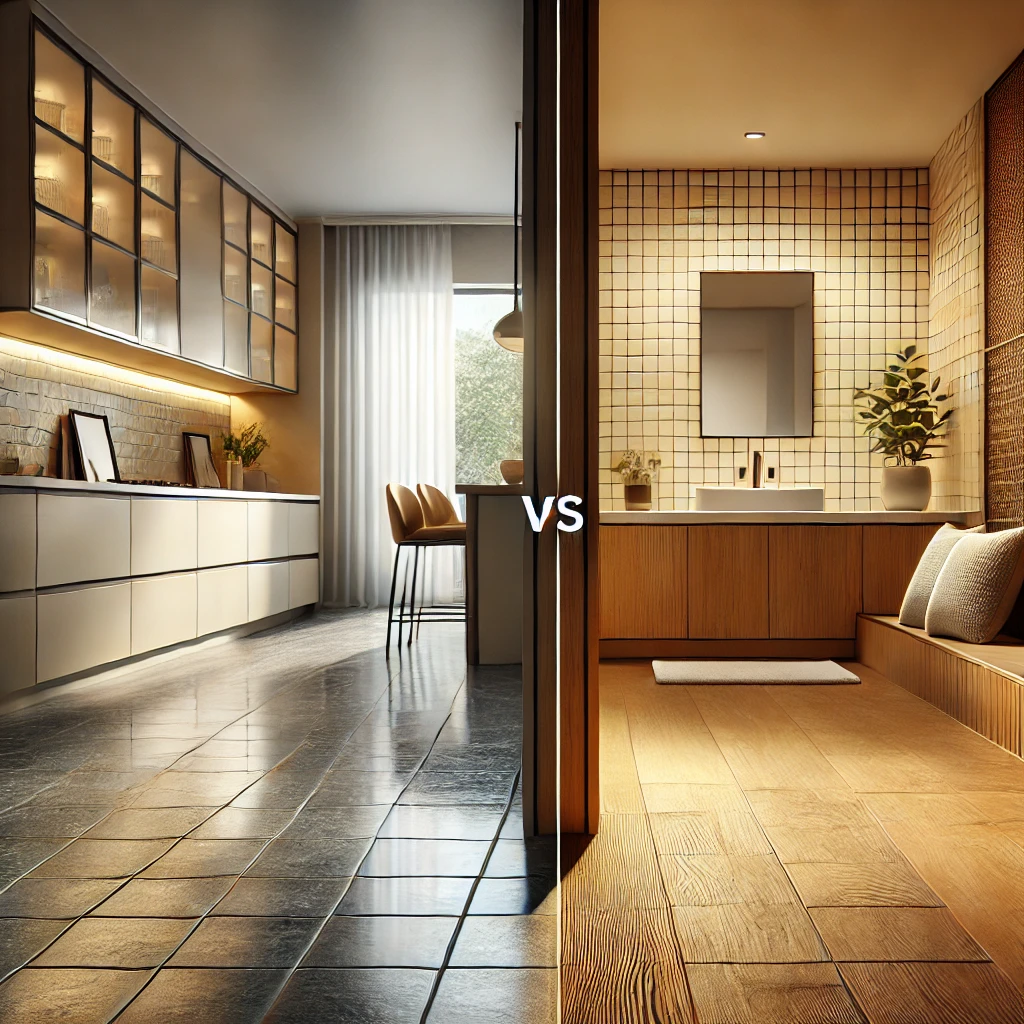Imagine stepping into a tile factory where machines hum with precision, designs are printed with the click of a button, and waste is a thing of the past. It’s not a scene from a sci-fi movie—it’s the future of tile production, and it’s happening right now. In a world where porcelain tiles are more in demand than ever, manufacturers are turning to cutting-edge technology to stay ahead. But what exactly are these game-changing manufacturing machines, and how are they reshaping the industry?
In this article, we’re diving deep into the future of tile production, spotlighting five innovative machines that are revolutionizing the way porcelain tiles are made. These aren’t just upgrades—they’re breakthroughs that tackle the biggest headaches in manufacturing, from sky-high energy bills to labor shortages. We’ll explore each machine’s magic, share real-world examples of their impact, and offer pro tips to help you harness their power. Whether you’re a manufacturer looking to modernize or just curious about the tech behind your tiles, this guide is your front-row seat to the future.
Here’s what we’ll cover:
- The Problem: Why traditional tile production is struggling to keep up.
- The Solutions: Five innovative machines that are changing the game.
- Real-World Examples: How these machines are already making waves.
- Advanced Tips: How to maximize their potential in your production line.
- Conclusion: Why now’s the time to embrace the future.
Ready to see what’s next for tile production? Let’s get started!
Introduction: Why the Future of Tile Production Matters
Tiles are everywhere—under your feet, on your walls, in your kitchen, and even in your bathroom. But have you ever stopped to think about how they’re made? For centuries, tile production has relied on tried-and-true methods, but today’s fast-paced world demands more. Consumers want customization, sustainability, and speed, and manufacturers are feeling the pressure to deliver. That’s where innovative porcelain tiles manufacturing machines step in.
In the heart of this transformation are five machines that are redefining what’s possible in porcelain tile manufacturing. These aren’t your grandpa’s tile presses—they’re high-tech marvels that slash costs, boost efficiency, and open up a world of design possibilities. From digital printers that bring any pattern to life to automated systems that sort and package tiles with robotic precision, these machines are the future. And the best part? They’re already here, quietly revolutionizing factories around the globe.
But why should you care? If you’re in the tile business, these machines could be the key to staying competitive in a market that’s growing by leaps and bounds. If you’re a homeowner or designer, understanding these innovations can help you appreciate the quality and craftsmanship behind your tiles. Either way, the future of manufacturing is exciting—and it’s unfolding right before our eyes.
The Problem: Why Traditional Tile Production Is Falling Behind
Let’s face it: traditional tile production has its flaws. While it’s served us well for decades, it’s struggling to keep up with modern demands. Picture a factory where energy costs soar, waste piles up, and workers scramble to meet tight deadlines. Sound familiar? Here’s a snapshot of the biggest challenges manufacturers face today:
High Energy Consumption
Tile production is energy-intensive, especially during the firing process. Traditional kilns guzzle power like a thirsty camel at an oasis, driving up costs and leaving a hefty carbon footprint. In fact, some factories report that energy bills eat up to 30% of their total production costs. That’s a massive chunk of change—and it’s not sustainable.
Waste and Inefficiency
From imperfect tiles to excess materials, waste is a constant headache. Traditional methods often lead to high rejection rates, with some manufacturers scrapping up to 10% of their output due to defects. That’s not just bad for the bottom line—it’s bad for the planet. Every discarded tile is a reminder that inefficiency is baked into the old ways.
Labor Shortages and Rising Costs
Finding skilled workers is tougher than ever, and labor costs are climbing faster than a rocket. Manual sorting, glazing, and packaging are time-consuming and prone to human error. In a survey of tile manufacturers, 68% said labor shortages were a top concern. Automation isn’t just a luxury—it’s becoming a necessity to keep the wheels turning.
Customization Demands
Today’s consumers want tiles that scream “me”—whether it’s a custom pattern or a specific color. But traditional production methods are built for mass output, not bespoke designs. Switching designs often means downtime, extra costs, and a logistical nightmare. How do you keep up when every client wants something unique?
Slow Turnaround Times
In a world where speed is king, traditional tile production can feel like a tortoise in a race. From design to delivery, the process can take weeks, frustrating clients and delaying projects. In an industry where time is money, slow production is a competitive disadvantage that’s hard to ignore.
These challenges aren’t just annoying—they’re holding the industry back. But here’s the good news: innovative machines are stepping in to solve these problems, one tile at a time.

Solutions: 5 Innovative Machines Revolutionizing Tile Production
Meet the future: five porcelain tiles manufacturing machines that are transforming the industry from the ground up. These aren’t just incremental upgrades—they’re breakthroughs that tackle energy waste, labor shortages, and customization headaches head-on. Let’s dive into each one and see how they’re reshaping the future of tile production.
1. Digital Inkjet Printers: Customization at Your Fingertips
What It Is
Imagine a printer, but instead of paper, it prints directly onto porcelain tiles. Digital inkjet printers use advanced technology to apply high-resolution designs, bringing even the most intricate patterns to life. It’s like giving your tiles a makeover with a magic wand.
How It Works
These printers use tiny nozzles to spray ceramic inks onto the tile surface. The designs are created digitally, so switching from one pattern to another is as easy as loading a new file. No more screen setups or lengthy changeovers—just pure, unadulterated creativity.
Why It’s Innovative
- Endless Customization: Want to replicate the look of rare marble or print a client’s logo? Done. The design possibilities are virtually limitless.
- Zero Waste: Since designs are digital, there’s no need for excess materials or trial runs. Print only what you need.
- Speed and Flexibility: Change designs on the fly without slowing down production. Perfect for small batches or one-off projects.
Why It Matters
For manufacturers, this means meeting the growing demand for personalized tiles without breaking a sweat. For customers, it’s a chance to get exactly what they want, down to the last detail.
2. Automated Tile Sorting and Packaging Systems: Efficiency on Autopilot
What It Is
These systems use robotics and AI to sort, inspect, and package tiles with precision. Think of them as the ultimate quality control team—only faster, smarter, and without coffee breaks.
How It Works
Tiles pass through a series of sensors and cameras that check for size, color, and defects. Robots then sort them into categories and package them for shipping, all without a human lifting a finger. It’s like a well-oiled machine—because it is.
Why It’s Innovative
- Labor Savings: Cut down on manual labor, reducing costs and human error.
- Consistency: AI doesn’t get tired or distracted, so every tile is inspected with the same level of scrutiny.
- Speed: Sorting and packaging happen in real-time, keeping production lines humming.
Why It Matters
In an era of rising labor costs, this technology is a lifeline. It frees up workers for more skilled tasks while keeping the factory running like clockwork.
3. Energy-Efficient Roller Kilns: Firing Up Sustainability
What It Is
Kilns are the heart of tile production, but they’re also energy hogs. Energy-efficient roller kilns are designed to cut power usage without sacrificing quality—like a hybrid car for your factory.
How It Works
These kilns use advanced insulation, heat recovery systems, and optimized firing cycles to reduce energy consumption. Some even recycle heat from the cooling process to preheat incoming tiles. It’s smart, efficient, and oh-so-green.
Why It’s Innovative
- Lower Energy Bills: Save up to 25% on energy costs, according to industry reports.
- Eco-Friendly: Reduced energy use means a smaller carbon footprint.
- Consistent Quality: Better temperature control leads to fewer defects and higher-quality tiles.
Why It Matters
With energy prices climbing and sustainability on everyone’s mind, these kilns are a win-win. They save money and make your factory a little greener—what’s not to love?
4. Laser-Guided Tile Cutting Machines: Precision Meets Versatility
What It Is
These machines use lasers to guide the cutting process, ensuring every tile is cut to exact specifications. Whether it’s a standard size or a custom shape, they deliver precision every time—like a surgeon with a steady hand.
How It Works
A laser beam maps out the cutting path, and high-powered tools follow it to slice through the tile. The result? Perfect cuts with minimal waste, every single time.
Why It’s Innovative
- Zero Waste: Optimize material usage by cutting tiles with surgical accuracy.
- Versatility: Handle everything from standard squares to intricate mosaics.
- Speed: Cut tiles faster than traditional methods, boosting production rates.
Why It Matters
Precision cutting opens up new design possibilities while keeping costs down. It’s the perfect marriage of creativity and efficiency.
5. Automated Glazing Lines: Consistency and Speed
What It Is
Glazing is a delicate process, but automated glazing lines make it foolproof. These systems apply glaze evenly across every tile, ensuring consistent quality—like a painter who never misses a spot.
How It Works
Tiles move through a conveyor where automated sprayers or rollers apply the glaze. Sensors monitor the thickness and coverage, adjusting in real-time for perfection. It’s high-tech glazing at its finest.
Why It’s Innovative
- Uniform Application: Every tile gets the same treatment, reducing defects.
- Faster Production: Automate a time-consuming step, speeding up the entire process.
- Less Waste: Precise application means less glaze is used, cutting costs.
Why It Matters
Consistency is king in tile production, and these lines deliver it in spades. Faster, better, and cheaper—who could ask for more?
Examples: Real-World Success Stories
These innovative machines aren’t just theoretical—they’re already making waves in factories around the world. Let’s look at five real-world examples of how they’re transforming porcelain tile manufacturing.
Case Study 1: Digital Inkjet Printers Unlock Customization
Company
A boutique tile manufacturer in Italy
Challenge
Clients wanted unique, personalized designs, but traditional methods were too slow and costly for small batches.
Solution
They invested in digital inkjet printers, allowing them to print custom designs on demand.
Result
Custom orders skyrocketed by 25%, and the factory could switch designs without downtime. One client even printed their family crest on bathroom tiles—talk about bespoke! The flexibility turned their small operation into a customization powerhouse.
Case Study 2: Automated Sorting Systems Slash Labor Costs
Company
A large-scale tile producer in China
Challenge
Rising labor costs and inconsistent quality control were eating into profits.
Solution
They installed automated tile sorting and packaging systems powered by AI.
Result
Labor costs dropped by 30%, and the AI caught defects that human inspectors missed, improving overall quality. The system paid for itself within a year, proving that automation isn’t just for the big players.
Case Study 3: Energy-Efficient Kilns Cut Costs and Carbon
Company
A mid-sized manufacturer in the USA
Challenge
Energy bills were through the roof, and the company wanted to reduce its environmental impact.
Solution
They retrofitted their production line with energy-efficient roller kilns.
Result
Energy costs fell by 20%, and the consistent firing reduced tile defects by 5%. The company now markets itself as eco-friendly, attracting sustainability-minded clients and boosting its reputation.
Case Study 4: Laser-Guided Cutters Enable Intricate Designs
Company
A mosaic tile specialist in Spain
Challenge
Producing complex mosaic patterns was time-consuming and wasteful.
Solution
They adopted laser-guided tile cutting machines for precision cuts.
Result
Waste dropped by 50%, and the company could offer more intricate designs. They even launched a new line of custom-cut tiles that became a bestseller, proving precision pays off.
Case Study 5: Automated Glazing Lines Boost Speed and Quality
Company
A fast-growing tile producer in India
Challenge
Manual glazing was slowing down production and leading to inconsistent quality.
Solution
They installed automated glazing lines with real-time monitoring.
Result
Production speed increased by 15%, and the uniform glaze improved the tiles’ look and feel. Customer satisfaction soared, with fewer complaints about uneven finishes—a win for both the factory and its clients.
These stories prove that innovation in tile production isn’t just a buzzword—it’s a game-changer for manufacturers big and small.
Advanced Tips: How to Make the Most of These Machines
Adopting innovative porcelain tiles manufacturing machines is just the first step. To truly maximize their potential, manufacturers need to think strategically. Here are five advanced tips to help you get the most out of these high-tech marvels:
1. Start Small, Scale Smart
Don’t overhaul your entire production line overnight—it’s like trying to renovate your house during a dinner party. Test one machine in a specific area—say, digital printers for custom orders—and measure the impact. Once you see the benefits (and trust me, you will), scale up gradually. This minimizes risk and helps your team adjust without chaos.
2. Train Your Team (and Keep Training)
New machines mean new skills. Invest in thorough training for your staff, and don’t stop there. Technology evolves faster than fashion trends, so schedule regular refreshers to keep everyone sharp. A well-trained team can unlock a machine’s full potential—think of it as giving them the keys to a sports car instead of a clunker.
3. Monitor and Optimize
These machines generate data—use it like a treasure map! Track metrics like energy usage, production speed, and defect rates. Identify bottlenecks and tweak settings for peak performance. For example, adjusting the firing cycle in your energy-efficient kiln could save even more energy. Small tweaks, big rewards.
4. Stay Ahead of the Curve
The future of manufacturing moves fast—don’t get caught napping. Subscribe to industry newsletters, attend trade shows, and network with other manufacturers to stay updated on the latest advancements. Being an early adopter can give you a competitive edge, like getting VIP access to a sold-out show.
5. Calculate the True ROI
Before investing, look beyond the sticker price—it’s not just about the upfront cost. Factor in long-term savings (like reduced energy bills or labor costs), potential revenue boosts from new product lines, and even marketing benefits (e.g., promoting your eco-friendly kilns). A machine that seems expensive upfront might pay for itself faster than you think—82% of manufacturers who adopted these machines saw a 30% increase in efficiency within two years.
These tips aren’t just nice-to-haves—they’re essential for squeezing every ounce of value from your investment in the future of tile production.
Conclusion: The Future Is Now—Don’t Get Left Behind
The tile production industry is at a crossroads. On one side, traditional methods are buckling under the weight of modern demands—high costs, slow processes, and unhappy customers. On the other, innovation in tile production is paving the way for a brighter, more efficient future. The five machines we’ve explored—digital inkjet printers, automated sorting systems, energy-efficient kilns, laser-guided cutters, and automated glazing lines—are more than just tools. They’re the building blocks of a new era in porcelain tile manufacturing.
For manufacturers, the message is clear: embrace these innovative machines or risk falling behind. The benefits are undeniable—lower costs, higher quality, faster production, and happier customers. And with the global tile market projected to grow by 6.8% annually, there’s never been a better time to invest in the future of manufacturing. Your factory could be the next success story—why not make it happen?
So, what’s your next move? If you’re ready to take your production line to the next level, start exploring these porcelain tiles manufacturing machines today. Your competitors might already be doing so—don’t let them steal the spotlight. The future is here—grab it with both hands!
FAQs: Your Burning Questions, Answered
Got questions about the future of tile production? We’ve got answers. Here are five original FAQs to wrap things up:
1. How do digital inkjet printers compare to traditional screen printing?
Digital inkjet printers are faster, more flexible, and waste less material than screen printing. They allow for on-demand customization without the need for screen setups, making them ideal for small batches and unique designs. It’s like upgrading from a typewriter to a laptop—same job, way better execution.
2. Are automated sorting systems worth the investment for small manufacturers?
While the upfront cost can be high, automated sorting systems can save small manufacturers money in the long run by reducing labor costs and minimizing errors. Consider starting with a scaled-down version or exploring shared facilities—it’s a big step, but the payoff could be huge.
3. What’s the biggest advantage of energy-efficient kilns?
The biggest win is cost savings—energy-efficient kilns can cut power bills by up to 25%. They also offer better temperature control, leading to fewer defects and higher-quality tiles. It’s like getting a fuel-efficient car that still drives like a dream.
4. Can laser-guided cutting machines handle all tile materials?
Yes, laser-guided cutting machines are versatile and can cut through porcelain tiles, ceramic, and even glass with precision. They’re especially useful for custom shapes and intricate designs—think of them as the Swiss Army knife of tile cutting.
5. How do automated glazing lines improve tile quality?
Automated glazing lines apply glaze evenly across every tile, reducing defects like streaks or uneven coverage. This consistency not only improves aesthetics but also enhances durability—your tiles will look better and last longer, keeping customers happy.



